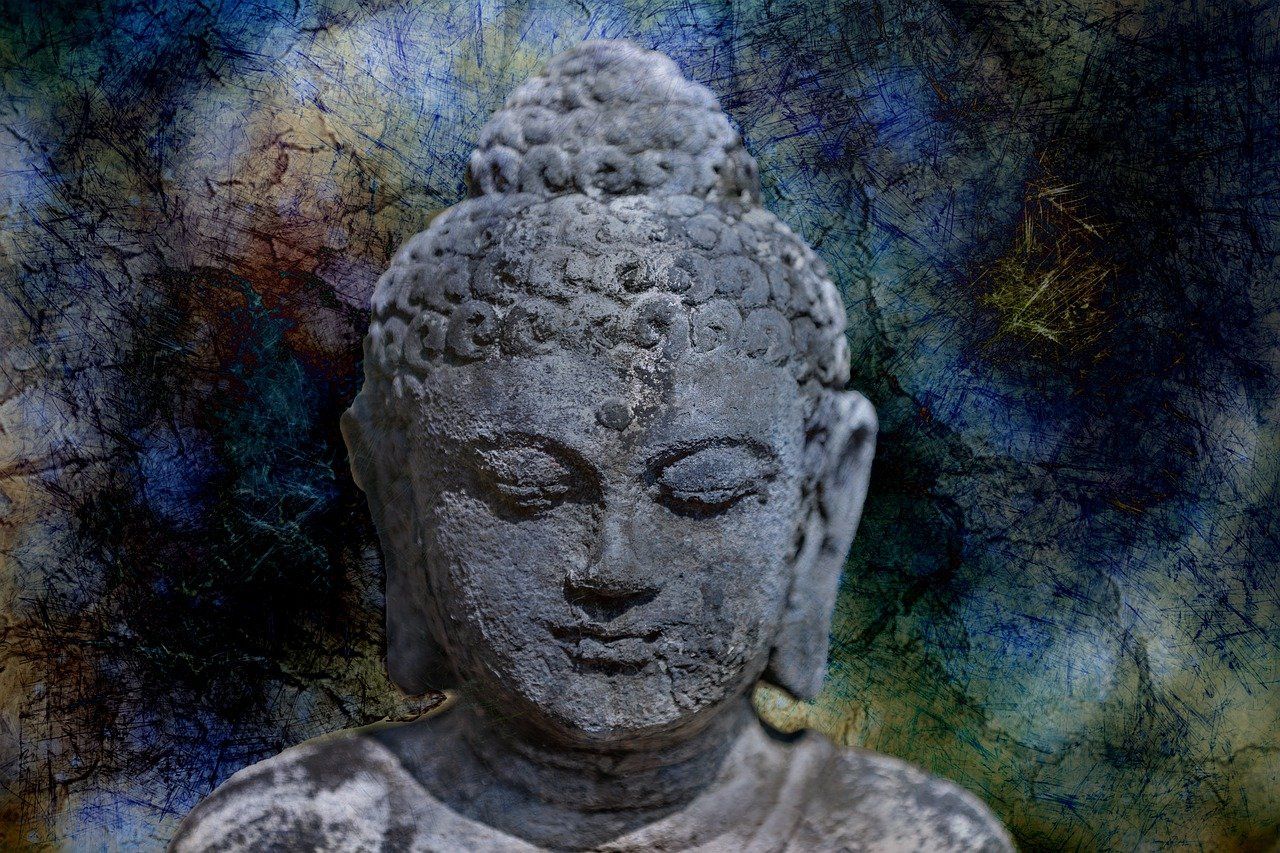The Way of Meditation Blog
Bringing Ancient Wisdom Into The Modern World
8 Ways To Master The Art Of Mindful Communication
Elyane Youssef • November 16, 2016
Communication is essential to achieve successful human relationships.
However, the type of communication we have highly determines the outcome of our relationships. It all simply boils down to “how” we are connecting with each other.
Jamyang Khyentse once said something intriguing about human communication: “We think that we have successful communication with others. In fact, we only have successful miscommunication without being aware of it.”
Applying mindful communication was almost non-existent for me in the past. Putting an end to “the successful miscommunications”—as Khyentse puts it—was (and still is, at times) arduous.
Truth be told, most of the discussions we have with others aren’t really mindful. Mindful discussion means shedding attention and awareness on our words—it’s rarely what we do, as our ego is consistently involved.
My relationships with others flourished when I taught myself the art of mindful communication.Throughout the years, I took note of what bothers me and others when communicating. I tried to investigate what engages us in conversations, versus what pulls us away.
Jamyang Khyentse once said something intriguing about human communication: “We think that we have successful communication with others. In fact, we only have successful miscommunication without being aware of it.”
Applying mindful communication was almost non-existent for me in the past. Putting an end to “the successful miscommunications”—as Khyentse puts it—was (and still is, at times) arduous.
Truth be told, most of the discussions we have with others aren’t really mindful. Mindful discussion means shedding attention and awareness on our words—it’s rarely what we do, as our ego is consistently involved.
My relationships with others flourished when I taught myself the art of mindful communication.Throughout the years, I took note of what bothers me and others when communicating. I tried to investigate what engages us in conversations, versus what pulls us away.
Here’s how I learned to successfully communicate:
Listening is the first step toward mindful communication. To mindfully listen means to wait patiently for the other person to finish before we speak. Also, it means keeping our mind focused on the speaker, instead of wandering away.
2. Non-judgment. I was a mediator a few times in my life. Having been one, I learned something super important: there are always two sides of the story, and there isn’t a right or a wrong one. People who are in conflict or disagreement tend to judge each other during communication. Even when we are on good terms with others, we unconsciously judge them because we don’t see their side of the story.
To mindfully converse and avoid conflicts, we need to try our best to refrain from judging the other person’s opinion, story or perspective. We should come to terms with the fact that there is no wrong or right—only different perceptions.
3. Showing understanding. I met a psychologist on one occasion in Nepal, who explained to me the importance of showing others that we understand them. He clarified how he uses this technique with his patients. When they tell him their issues, the first thing he says is, “I understand” or “I see what you mean.” It gives them a sense of comfort that their words and feelings are relatable.
You see, at the end of the day, we just want to be understood. I reckon that to understand one another, applying the non-judgment technique allows us to see the bigger picture.
4. Be in their shoes. I remember hearing a lot of “you’re not in my shoes” or “put yourself in my shoes” To be in someone else’s shoes is to respect their experience by imagining it’s us instead of them living it.
When we do this, we develop a better idea of what they’re feeling. We don’t have to wait for them to ask us if we’re getting what they’re saying. What I do is imagine myself in the experience of the other person, so I can harbor understanding.
5. Be totally there. One of the things that bothers me the most is communicating with someone who’s not “there.” Since I have realized how disrespectful it is, I’ve tried my best to be “present” in my conversations.
Not being present during communication can range from checking smartphones, watching TV or engaging in anything else during the actual discussion. To have a successful communication, we should put our activities aside and totally be with the person who’s talking.
6. The first response shouldn’t be personal. This used to be one of my greatest faults in the past. I’ve come to notice that most of us do it unconsciously. When it’s time to respond back, we tend to reply with a personal answer. We either tell a personal story or explain how we intimately feel about it. While it’s significant to back up our response with personal feelings and stories, it’s better not to express them at first.
I learned the hard way that the first response must relate to the speaker. “I understand”—as mentioned earlier—can be a good place to start. Then we can ask the person how they feel about it, what they are going to do, or ask them to elaborate.
7. Letting go of results. When I was younger, I was very competitive, especially when it came to discussions. Come what may, I was determined to be the one winning the discussion. I expected a result. I estimated that people would have to agree with me. I only stopped this habit when I realized that waiting for a result in discussions drains us of energy and in return kills the communication.
We should engage in conversations more lightly if we truly wish to mindfully communicate. Not taking things personally and responding in a non-aggressive way are good baby steps toward accomplishing this goal.
8. Don’t harm. Harsh speech is one of the most important precepts in Buddhism. The thing I have enjoyed the most while studying Buddhism is how they insist on remaining kind and compassionate with other people during communication.
It is not necessary to harm others when we are talking to them. Buddhists believe that every harmful word that comes out of our mouths is a double-edged sword; it will hurt us as much as it will hurt others.
Not being present during communication can range from checking smartphones, watching TV or engaging in anything else during the actual discussion. To have a successful communication, we should put our activities aside and totally be with the person who’s talking.
6. The first response shouldn’t be personal. This used to be one of my greatest faults in the past. I’ve come to notice that most of us do it unconsciously. When it’s time to respond back, we tend to reply with a personal answer. We either tell a personal story or explain how we intimately feel about it. While it’s significant to back up our response with personal feelings and stories, it’s better not to express them at first.
I learned the hard way that the first response must relate to the speaker. “I understand”—as mentioned earlier—can be a good place to start. Then we can ask the person how they feel about it, what they are going to do, or ask them to elaborate.
7. Letting go of results. When I was younger, I was very competitive, especially when it came to discussions. Come what may, I was determined to be the one winning the discussion. I expected a result. I estimated that people would have to agree with me. I only stopped this habit when I realized that waiting for a result in discussions drains us of energy and in return kills the communication.
We should engage in conversations more lightly if we truly wish to mindfully communicate. Not taking things personally and responding in a non-aggressive way are good baby steps toward accomplishing this goal.
8. Don’t harm. Harsh speech is one of the most important precepts in Buddhism. The thing I have enjoyed the most while studying Buddhism is how they insist on remaining kind and compassionate with other people during communication.
It is not necessary to harm others when we are talking to them. Buddhists believe that every harmful word that comes out of our mouths is a double-edged sword; it will hurt us as much as it will hurt others.
Written by Elyane Youssef
Original article @ Elephant Journal
Get A FREE
Guided Meditation Series
with Chad Foreman

In today’s fast-paced world, the mind often races, driven by the demands of work, family, and personal ambitions. Meditation is commonly seen as a practice to calm the mind, foster inner peace, and connect with deeper aspects of existence. Yet, one crucial element often overlooked is the state of the body, particularly the nervous system. Relaxing the nervous system isn’t just a preparatory step; it is foundational for unlocking the deeper states of awareness and tranquility that meditation promises. Drawing insights from my journey and teachings, we will explore why this is so vital and how it transforms the meditative experience.











